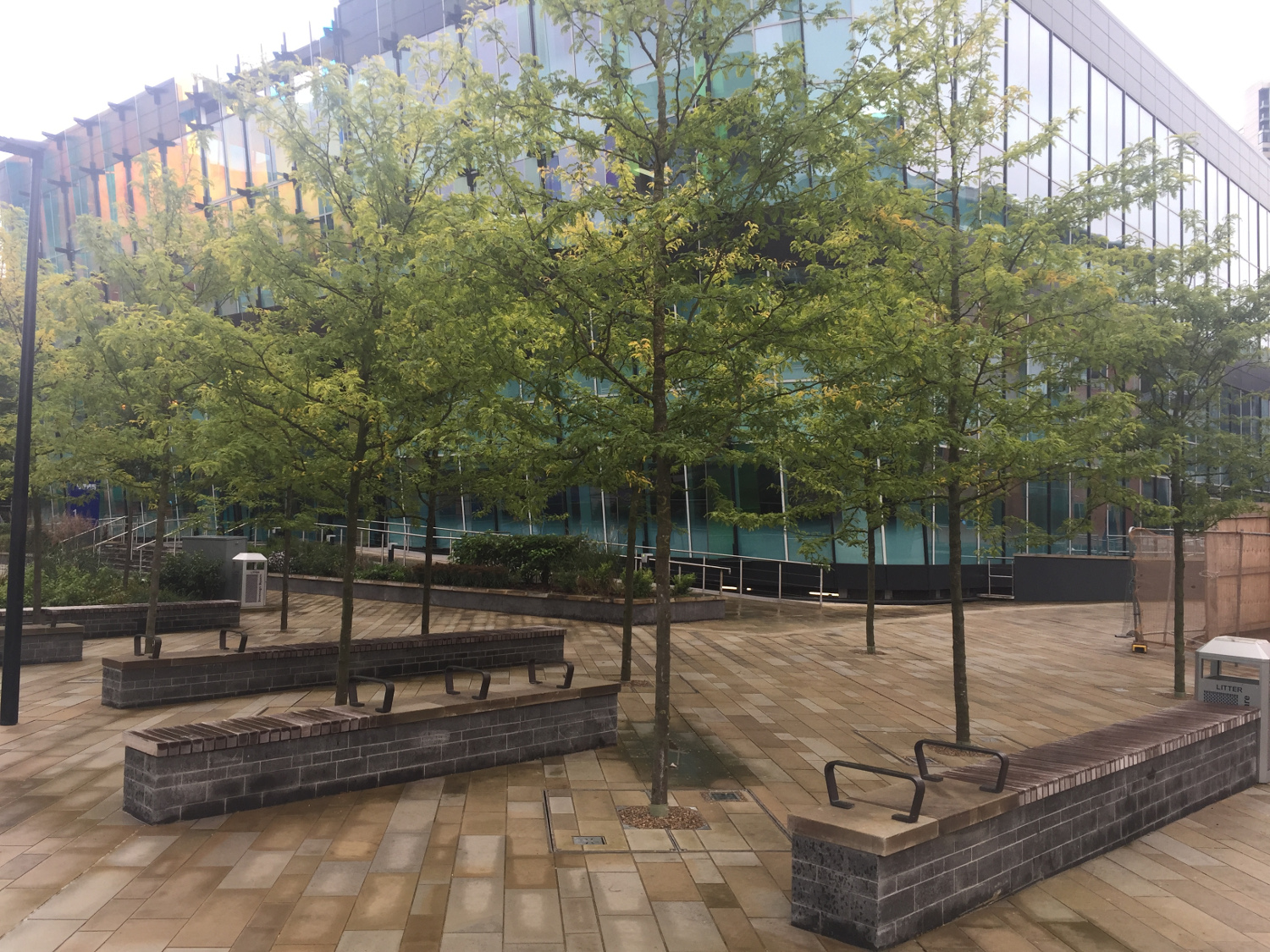The City of Leeds, located in West Yorkshire, is the second largest legal and financial centre in the UK, as well as one of its most rapidly growing cities. In recent years, Leeds’ City Council has undertaken major urban renewal and redevelopment initiatives to help strengthen the local economy and to continue to develop the city as a regional capital. The Sovereign Square development is part of the Council’s masterplan to regenerate the South Bank area of the city, a historic, formerly industrial area that is becoming Leeds’ new digital and creative hub.
The large green public space that anchors three surrounding buildings, is a main feature of Sovereign Square and Leeds’ first public square for many years. Designed by re-form, it includes raised lawns, tree-lined pedestrian boulevards, a tree grove, a water rill, fountains, a rain garden, and outdoor seating. The space serves as a gathering place for workers and visitors, provides a place for rest and reflection among natural elements, and connects Leeds’ city centre to the South Bank redevelopment area.
A grove of ten Honey Locust trees was planted in a hardscape of local Yorkstone outside the glass façade of 1 Sovereign Square. The grove is surrounded by stone benches and bicycle racks, which encourage people to congregate and to enjoy the cool space and shade. Under the paving, Silva Cells provide the necessary soil volume to grow large, mature trees within the hard Yorkstone-paved surfaces, while also managing stormwater runoff from adjacent hardscapes within the park.
Water has always been an important part of the site due to its location on the line of an old goit from the River Aire that once powered industrial mills, and will continue to be a prominent feature of the park. A large rain garden will manage surface water, improving the city’s flooding resilience and helping to establish a diverse ecological habitat. Trees and plants have been chosen for the site that will become a source of food and shelter for birds and other animals. The range of species have been selected for their beauty and hardiness but also for the biodiversity they will bring to the area.
“The emphasis on bringing green infrastructure to the city centre was a crucial part of the public realm design. It was also vital that the trees installed were well-established and healthy, and would remain so for the next 20 years or more,” says Alison Finch of re-form Landscape Architecture.
She went on, “Silva Cells were used to ensure the trees were given sufficient volume of soil for a healthy establishment and longevity, allowing them to grow and thrive. The Silva Cell system was also robust enough to be paved over, allowing for seamless areas of paving to be achieved around the tree planting. Honey Locust trees were chosen for the tree grove due to their light leaf canopy and bold summer and autumn colours. The tree foliage allows dappled shade to reach the seating areas below, providing a pleasant, semi-shaded environment.” In total, 450 Silva Cell frames and 150 Silva Cell decks were installed in a three layer system to support and provide 12.74 m3 of soil to ten new trees.
Because Leeds City Council had the foresight to incorporate sustainable revitalization efforts into the city’s redevelopment, a vibrant green public space now exists where an underused car park used to be. The Silva Cells will make it possible for the Honey Locust grove to prosper into maturity, providing large areas of shade cover, protection from the elements, and a comfortable community space for people to gather, communicate, and seek a moment of respite outside of the office for years to come.
Installation Summary
Average soil volume per tree: 12.73
Number of Trees: 10
Total Silva Cells: 450 Frames, 150 Decks
Installation Date: September 2015
Installation type: Trees
Project Site: Plaza
Project Designer: re-form
Contractors: Eurovia UK and Grace Landscapes








Leave Your Comment